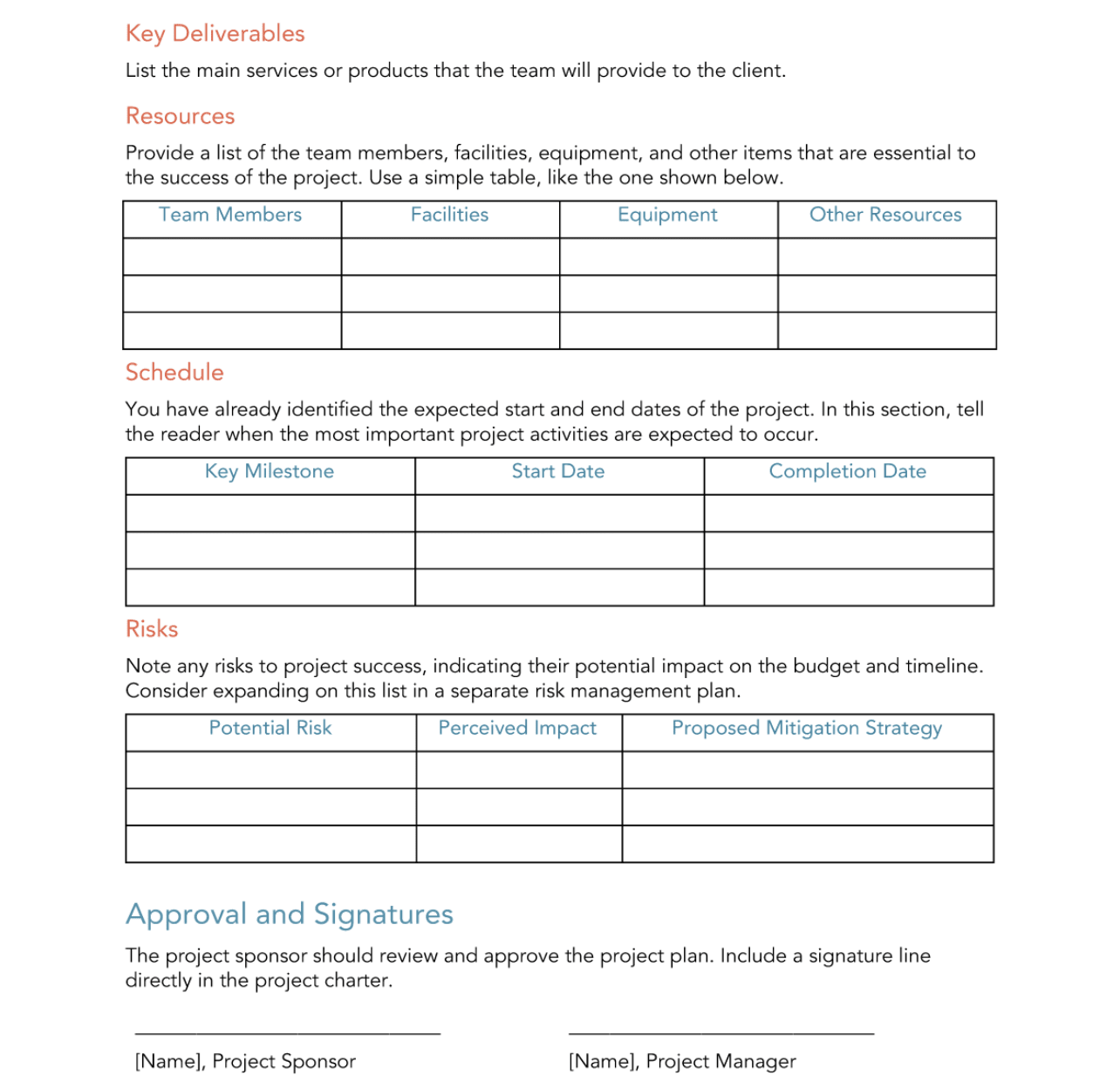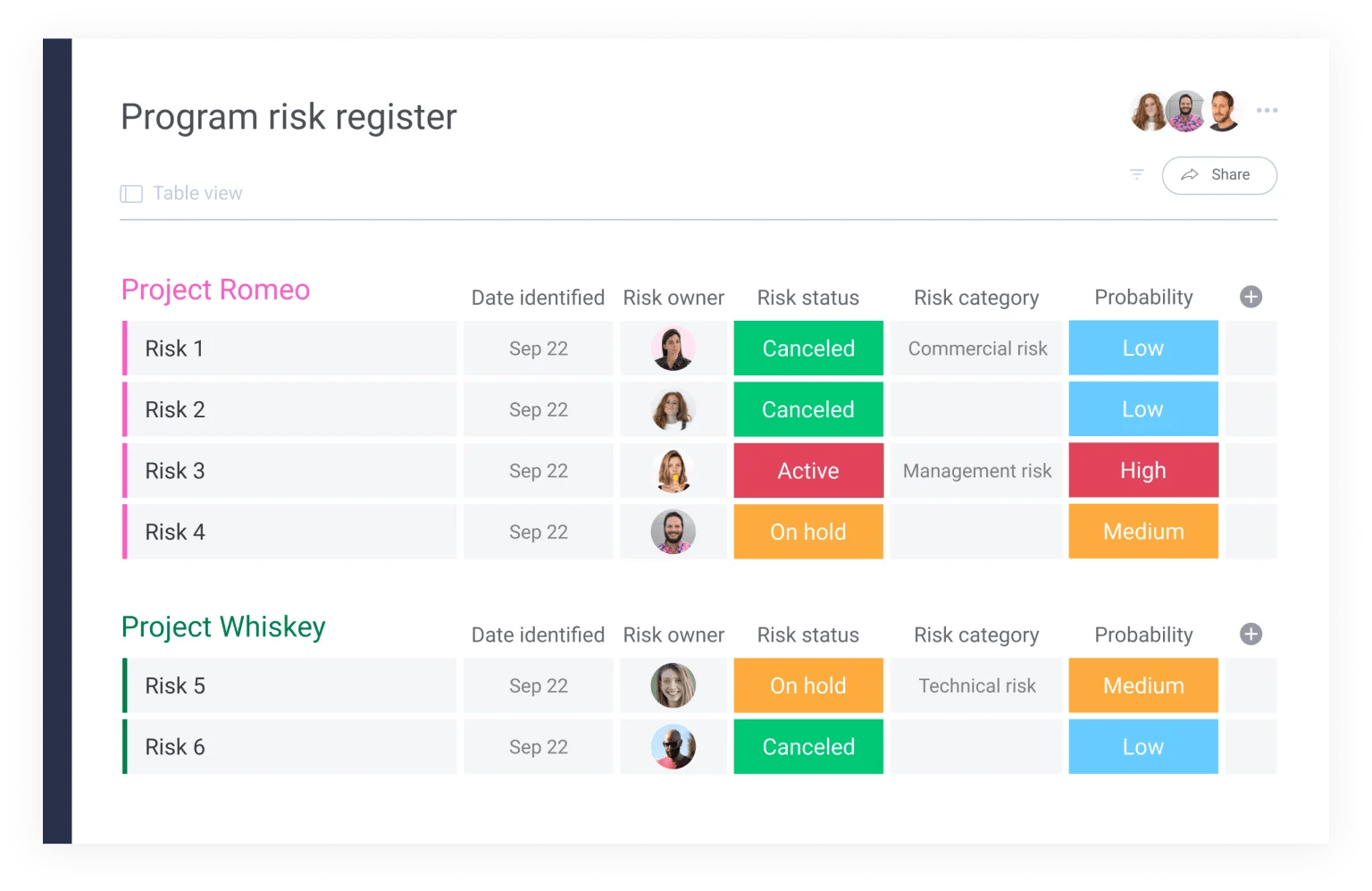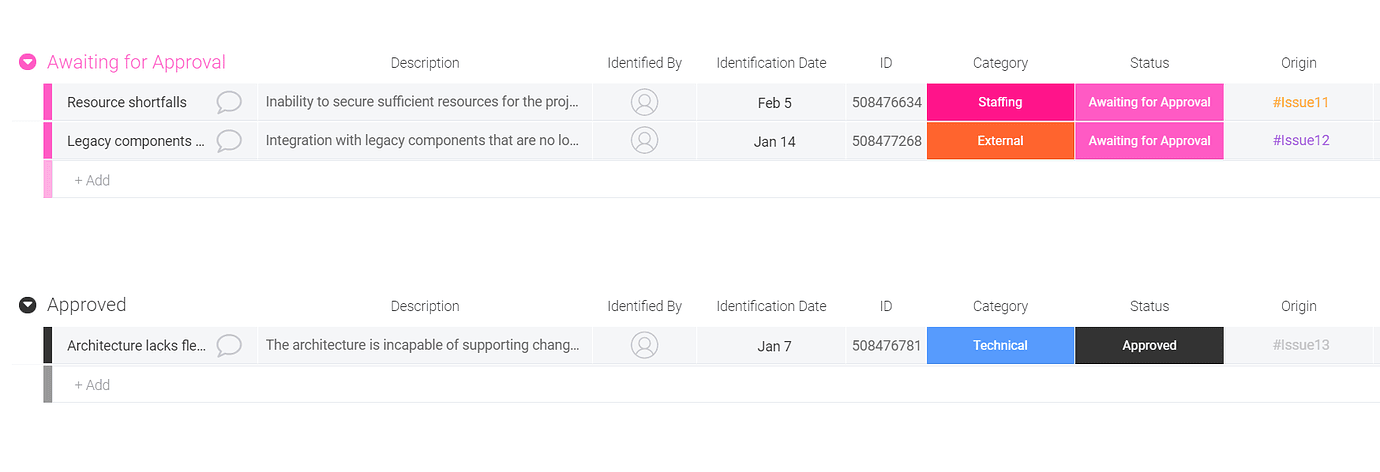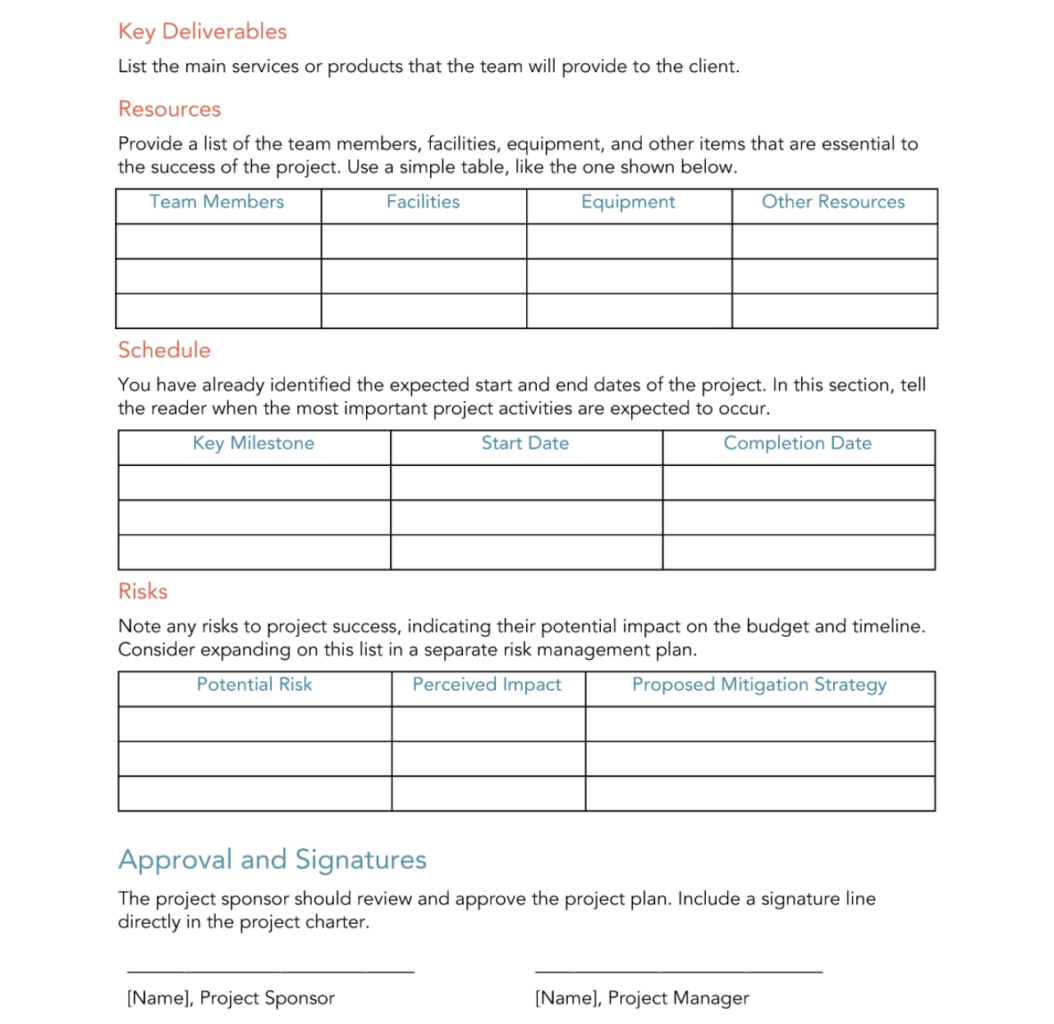Every step of the risk management process
Blog: Monday Project Management Blog
Running a project is like walking a tightrope. You know where you’re going and how to get there, but one unexpected gust of wind can leave you hanging on for dear life.
Risk management is all about trying to predict and prepare for those big gusts, and making sure there’s a net to catch you if you fall.
In this article, we’ll define risk management and carefully deconstruct the risk management process. That will help you leverage risk mitigation and prevention powers on your next project.
What is risk management?
Risk management is essentially a balancing act. It’s managing both individual risks and the project’s overall risk simultaneously.
Risk is any kind of unexpected occurrence or event that could affect your project. Risk can affect it for better or for worse, and it can affect a wide range of factors, from the project’s processes and technology to its people and resources.
Risk management occurs throughout the entire project and is often addressed as early as in the project charter.

A common misconception regarding risk management is that it’s one person’s job.
In reality, there’s often a risk manager or risk coordinator that helps oversee the process and is responsible for managing individual risk. But all project stakeholders are responsible for identifying risks.
Overall or high-level risks may be addressed during the concept phase conducted prior to a project’s launch, alongside scope and objective clarification.
Here’s where the project’s owners or sponsor will define the benefits the final project will deliver alongside the degree of risk they’re willing to tolerate.
Then more risks will be identified and analyzed during the initiation and planning stage as well, as throughout the execution, monitoring, and control of the project. That’s because new risks readily present themselves throughout the project’s lifecycle.
Some benefits of the risk management process include:
- Providing a more predictable project outcome by clearly identifying and planning for risks, so they’re less likely to derail the project.
- Increasing stability of project operations by providing clear ownership for risk items and corresponding actions should the risk occur.
- Addressing possible regulatory issues by having a formal plan ahead of time, along with any pertinent paperwork that might be required.
- Decreasing legal liability and avoidance of possible litigation by showcasing a formal plan to both mitigate and prevent risk, therefore preventing any negligence.
- Compliance with newer pieces of legislation by proactively identifying all possible risks to the project and doing proper research at a local, state, and federal level.
To learn even more about risk management, check out our comprehensive guide.
What’s the difference between positive risk and negative risk?
Not all risk is bad risk.
Sure, risk is mostly associated with being negative because most risk is, in fact, negative. But there are positive risks as well.
Negative risk implies a potential unwanted action that has the capacity to delay a project, inflate costs, or downright destroy a project’s chances of success.
Positive risks are exactly the opposite. They have the potential to affect the project in beneficial ways and be an absolute blessing.
Some common examples of positive risk are completing the project early or getting more customers than you originally planned.
Components of a detailed risk management process
The risk management process is an iterative process involving key steps like identifying, analyzing, prioritizing, assigning ownership, and planning.
Often, it also involves monitoring as well.
We’ll examine each facet of the risk management process in this section.
1. Risk identification
A crucial step in the risk management plan, risk identification is where you identify and record new potential risks in the risk register.
It’s basically a brainstorming session where you ask, “’hey, what if X happened?”
If X is even remotely risky, then you write it down and begin tracking it.
The bulk of the risk identification process happens at the beginning of the project, but it’s important to remember that it’s an ongoing process. New risk presents itself every day and requires constant identification, analysis, and planning.
2. Risk analysis
Now that you’re done identifying risks, it’s time to analyze them.
Risk analysis is the process of examining how your project’s outcomes and objectives could change due to the impact of potential risk events.
Put plainly, risk analysis determines the likelihood of a risk event occurring and takes it a step further to measure risk impact, risk exposure, and set a risk occurrence time frame.
monday.com has a handy Risk Register Template that makes it incredibly easy to measure risk probability and determine its corresponding owner.

It also shows probability calculations, categories, and risk status, so every project management professional and risk manager has full visibility.
The 2 major types of risk analysis are qualitative and quantitative:
- Qualitative risk analysis determines every possible outcome for a project and gives them a rating based on a general scale you’ve agreed upon as a team, such as high, medium, low.
- Quantitative risk analysis takes the qualitative analysis up a notch by adding numerical values to your assessments. Probability is usually given on a 0-100% scale, while impact may be given as a dollar value, number of weeks delay, or other measure.
3. Risk prioritization
Very few risks are created equal, so it’s crucial that you find a way to prioritize your efforts. This is especially important if you have a mile-high list of risks that feel daunting to even look at.
You’ll find that some risks require immediate attention because they have the potential to derail your entire project.
Since failure isn’t an option, everything else gets pushed aside until these risks are sorted out.
Some other risks fall into the important but less threatening category and require a less intense approach.
Finally, there are risks that have little to no impact whatsoever. Since they don’t affect the project’s budget or schedule, they are often just monitored to ensure nothing changes.
4. Risk ownership
You’ve put in a lot of effort to identify, analyze, and prioritize risk, and now it’s time to make sure there’s clear ownership.
It’ll be their responsibility to identify whether the risk has become a reality. They’ll also lead the charge toward resolving it.
Once identified, find a way to communicate it to the whole team. A tactical example here would be assigning clear ownership and corresponding actions for each risk in your Work OS.
5. Risk response
There are 4 general responses you can select for any identified risk:
- Avoid the risk, so that its probability of occurring is next to nil.
- Mitigate the risk, so your project doesn’t feel too strong an impact.
- Share the risk by transferring to a third-party of some kind.
- Accept the risk by choosing not to resolve, share, or mitigate it.
The risk owner will typically be the first to act on the outlined risk mitigation strategy. It’s often their role to also communicate the risk event and any corresponding actions taken to both the team and any stakeholders.
6. Risk monitoring
Unleashing the fury of your risk management process onto potential risks isn’t complete without some form of tracking system in place. This is especially important for larger risks that are ongoing and require long-term oversight.
Here’s where monitoring comes into play.
The risk owner will monitor the risk and track it until you come to a resolution or the project’s completion. Usually, this comes in the form of risk meetings or regular risk updates via project risk management software.
The most important element of risk monitoring is ensuring there’s transparency. Keeping everyone on the same page is priority one for any great risk management process.
When it comes to risk management, monday.com has your back
Arguably the greatest feature monday.com offers to the risk management process is transparency.
Anyone on the team has the ability to identify, flag, and add to the risk issue log board — as shown below — which acts as a form of digital risk register.

As you continue through the risk management process, you’ll find the risk assessment and response board — shown below — that highlights the current assessment of known risk alongside the potential time, quality, and cost impacts.
At its core, it serves as a guide to evaluating the impact and likelihood of a risk event.

Finally, we end up with the risk action plan, which makes monitoring and controlling risk easy for anyone to follow. Such risk action plans work perfectly for any risk that requires a little extra attention.

monday.com is well equipped to handle even the most complex risk management process, but that’s far from all it’s capable of accomplishing.
At its core, monday.com is a full-fledged Work OS capable of managing any project.
Some additional benefits of monday.com include:
- 30+ customizable column types to guarantee complete freedom to curate the perfect workflow.
- 8+ data visualizations that give your data greater depth and flexibility, so everyone has a clear line of sight to what matters most.
- Unlimited automation recipes that eradicate time-consuming admin work and prevent costly human errors.
- 40+ integrations so you’re always connected to the files and data your team needs.
- Extensive communication tools like tagging and chat that provide your team real-time updates from top to bottom.
Getting Started
An iron-clad risk management process makes walking the tightrope less scary.
The day to day feels lighter because you know you’ve got a plan for most of what life throws your way. That easy confidence is infectious, and your team will feel more prepared to tackle any changes or challenges that surface.
Now that you’ve got a better grasp on the risk management process, it’s time to formalize it.
Give our Risk Register Template a spin. It takes minutes to set up and could be exactly the system your team needs to boost their confidence.
The post Every step of the risk management process appeared first on monday.com Blog.
Leave a Comment
You must be logged in to post a comment.








